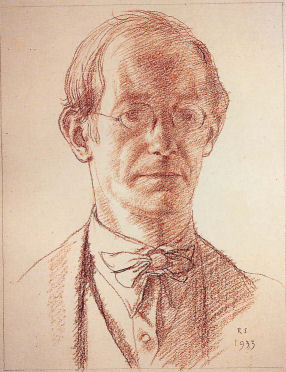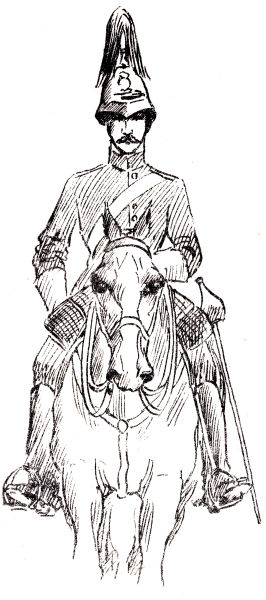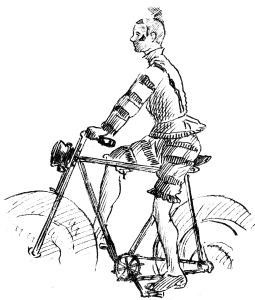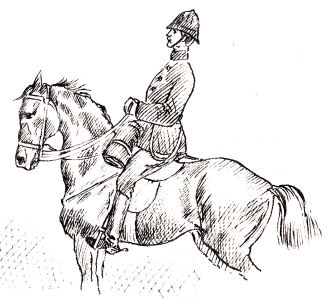|
|
SCHWABE, Hemel Hempstead, circa 1900 January, 2011 |
|
This query arose as a need to identify the artist who recorded the 1898 Charter day events in the Heath Brow Chronicle
As significant information on the Schwabe famiky is given on the Schwabe pages of the The Man Family Web Site, and Randoph Schwabe's career is well documented on the web (see extracted texts and links below) I wma simply concentrating on the information I have so far found about their period in Hemel Hempstead.
|
Lawrence Schwabe had German ancestry and his wife, Octavie, was born in Germany. They had two sons, Eric Schwabe (born Bolton, Lancashire, 1883) and Randolph Schwabe (born Bolton, Lancashire, 1885). In the 1891 census the family were living in Kent, Lawrence being described as a Merchant of General Cotton Goods. At some stage they moved to Hemel Hempstead, but are not recorded in the 1890s directories available to me. The earliest reference I have of them being in Hemel Hempstead is that Eric was editor, and Randolph artist, of the Heath Brow Chronicle of July 1898. The 1901 census shows them as living at 40 Marlowes, with Lawrence being a letter press printer, Eric a clerk, and Randolph an art student. The house had been occupied by David Mathews, a retired steam engine maker, in the 1890 directory and 1891 census, but he was not in the 1895 directory, suggesting a possible change in occupant. By the 1902 Herts directory Miss Elizabeth Mason was at 40 Marlowes and Lawrence had moved to Ralph House, Broad Street, with a stationer's business at Bath Street Hemel Hempstead. Octavie died at Hemel Hempstead in 1907 and there is no entry for the family in the 1908 directory, and they had clearly left by the 1911 census, when Lawrence was a retired merchant boarding in London |
Randolph Schwabe Self-portrait, 1933 |
The following biography comes from the Introduction to Randolph Schwabe Memorial Exhibition Catalogue: The Arts Council: 1951. Charles Tennyson. (This text from Schwabe pages of the The Man Family Web Site)
|
RANDOLPH SCHWABE was born, in 1885, the son of a Manchester cotton merchant, whose father had come over from Germany in 1820. He was a precocious child, for he could read to himself for pleasure at four years old and had already developed a passion for drawing. Soon after this his family moved to Hemel Hempstead in Hertfordshire, where he attended a private school as a day-boy. There he illustrated entirely himself a school magazine which his brother edited, and in his last term had the satisfaction of seeing one of his drawings, representing the Diamond Jubilee celebrations at Hemel Hempstead, reproduced in a local paper. At fourteen his normal education ceased and he went to the Royal College of Art as a student. This, however, proved a grievous disappointment. The basis of the teaching at the College was still the making of elaborate charcoal studies from casts, months often being spent on a single drawing. To young Schwabe, with his enthusiasm and already well- developed talent, this was completely stultifying. His release from bondage came through a chance meeting with an old school-fellow, who was working at the Slade and who suggested that he should seek a transfer. Within a few days this was arranged and he settled down happily in Gower Street under those two great teachers, Frederick Brown and Henry Tonks. At the Slade, Schwabe found his spiritual home. He worked there tirelessly and enthusiastically for four and a half years and then studied for eight months under Jean Paul Laurens at the Academie Julien in Paris. Thence he travelled to Italy, working for some time at Rome and visiting Florence and other Italian cities. This visit laid the foundation of a profound knowledge of Italian art and architecture which was to be of immense value to him afterwards. The remainder of his life falls into three divisions; the first extending to the end of the First World War, the out- break of which found him married and settled in an ancient and dilapidated house (now demolished) in Cheyne Row just west of Oakley Street. He was already beginning to be well known as a draughtsman, etcher and lithographer, and, as his frail physique and uncertain health made it impossible for him to serve in the armed forces, the authorities very wisely appointed him an official war artist. An excellent collection of the drawings which he made of the work of the Women's Land Army is now at the Imperial War Museum
The second period, 1918 to 1930, was one steadily increasing
reputation. He began to teach at Camberwell and Westminster, and
played an important part .the re- organization of the Royal
College of Art, as teacher of drawing under Sir William
Rothenstein. He exhibited regularly at the New English Art Club,
of which he had become a member in 1917, and at the Friday Club
and its successor, the London Group. He also made a thorough
study of costume, writing an admirable book on Historic Costume
in collaboration with F. M. Kelly (published 1925) and a Short
History of Costume and Armour (published 1931), taking a
practical interest in costume for the stage and a still more
important interest in the ballet. In this, he was closely
associated with Mr. C. W. Beaumont as publisher, for whom he
illustrated several books on these and other subjects. It was
characteristic of his thoroughness and intellectual interest in
his art that During these years, he gradually gave up painting in oil and concentrated more and more on drawing with pen, pencil and water-colour, becoming generally recognized as a master in these fields.
In 1930, on the death of Henry Tonks, he was appointed Slade
Professor of Fine Art at the University of London and Principal
of the Slade School. The appointment was, perhaps, unexpected,
but Schwabe's experience under Rothenstein at the Royal College
and his eminence in what has always been regarded as the basis
of teaching at the Slade - the art and science of drawing --
were undeniable qualifications. In character, too, he was
admirably fitted for the post. He was enthusiastic, sympathetic
and profoundly scholarly and, in spite of his gentle and
hesitating manner, no one, not even his grim and often
terrifying predecessor, could more clearly perceive or more
tellingly rebuke superficial or evasive work. For eighteen years
he devoted himself unsparingly to the work of the School, both
academic and administrative, showing himself in every way a
worthy successor of the great men who had preceded him. |
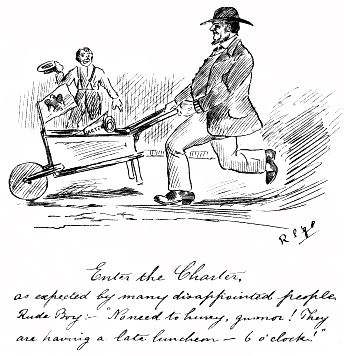 |
|
|
|
|
|
|
|
|
|
|
The following web sites contain information of Randolph Schwabe
Helenburgh Hereos - Randolph Schwabe (portrait)
LARA - Randolph Schwabe (self portrait)
British Water Colours - Randolph Schwabe (examples of sketches)
Oxford Dictionary of National Biography (subscription required)
There are many others, including art dealers with some of his pictures for sale.


